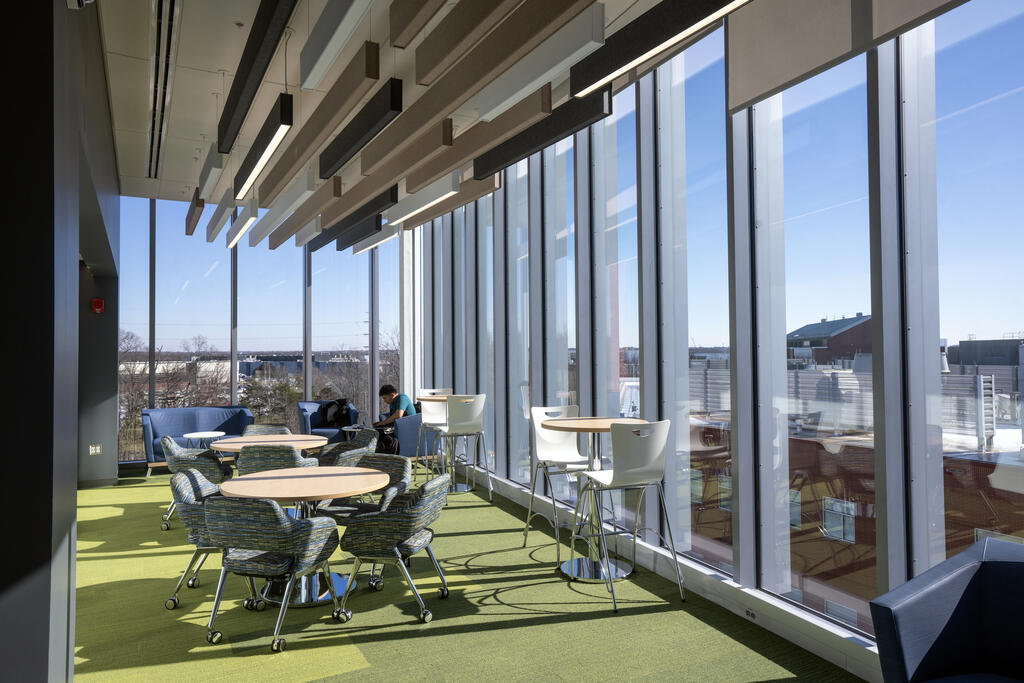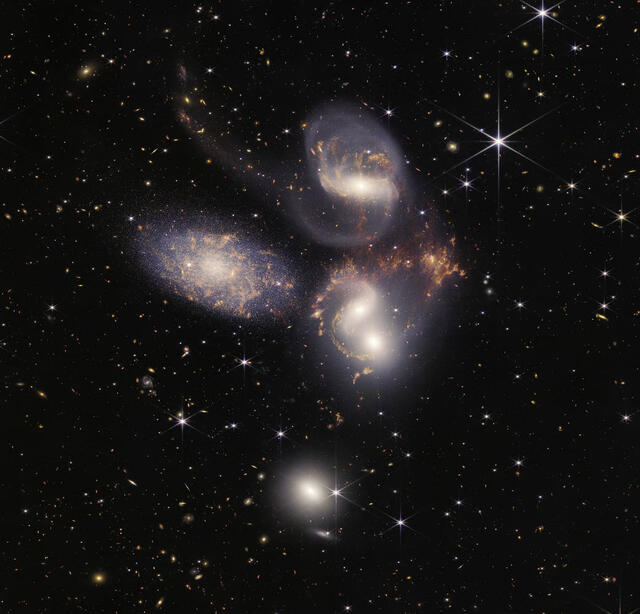Admission CTAs
Making space history and launching student careers
Where were you on November 4, 2021?
Or how about July 12, 2022?
And where will you be on September 10, 2022?
On that early November day last year, the National Academies of Sciences, Engineering, and Medicine released the “Pathways to Discovery in Astronomy and Astrophysics for the 2020s.” This decadal survey outlines scientific priorities and recommends funding for the next ten years of astronomy and astrophysics efforts.
On July 12, 2022 NASA released the first wave of images from their recently launched James Webb Space Telescope (JWST) inspiring current research and future astronomers, including many at George Mason University.
You too can be a part of Mason’s space history if you register for and attend Mason’s first Space Day on the Fairfax campus this September 10, 2022.
This blog features an overview from some Mason science of what the future holds for Astronomy and Astrophysics research.
It is such an exciting time to inspire our students.
When asked to characterize the National Academies decadal survey’s impact, Mason Physics and Astronomy Professor, Shobita Satyapal explained, “The science that will be enabled by the recommended facilities in the recommended priorities will provide breakthroughs in the study of supermassive black holes.”
According to Satyapal, “the report also addressed issues on diversity and inclusion in ways that I have never before seen in a report of this nature. This gave me hope for a better future for the generations of students to come. I am really excited.”
JWST is now a fully operational space telescope, ready to #UnfoldtheUniverse
In a recent article, Peter Plavchan, Associate Professor of Physics and Astronomy and Director of Mason’s Observatories, and Mason Physics and Astronomy Professor Michael Summers, reflected on the launch of JWST and anticipated its shared observations that will revolutionize our understanding of the early universe, the formation of the earliest stars and galaxies, planets orbiting nearby stars (exoplanets) and search for signatures of life on those planets.
Led by Satyapal, Mason’s Black Hole Galaxy Connection Group (BGC) of scientists has been granted time with the JWST to search for intermediate mass black holes. The BCG blog summarizes the science behind their particular project.
The BGC group seeks to understand the origins of supermassive black holes, how they grow to billions of times the mass of the sun, and how they impact and shape the evolution of the host galaxy in which they reside.
Our current students have been analyzing the data from NGC 7319 in Stephen’s quintet, which is Satyapal’s favorite JWST image from the mid-July image release.
One of the galaxies in this image has a feeding supermassive black hole. The spectrum is spectacular, showing a plethora of spectral features that have never before been seen which we are currently analyzing (student Sara Doan) and modeling (grad student Jeffrey McKaig).
The data from the team’s own JWST observations will arrive next summer and will potentially reveal the first feeding intermediate mass black hole predicted to be only 1,000 times the mass of the sun. Fingers crossed the Mason BCG team’s predictions end up being right.
JWST will make transformative advances, helping launch the careers of our current and future students for years to come.
For example, this past spring, Mason student, Emma Schwartzman, received an NRAO Student Observing Support Award from Associated Universities Inc. and the National Science Foundation to support her research into early 2024. Mason Science alumnus Michael Reefe recently discovered a sample of possible intermediate mass black holes. The results were just accepted for publication in the Astrophysical Journal and Reefe was recently awarded an NSF GRFP to continue his research.
The BCG also runs an international seminar series, inviting teams to present their results conducted at a research level, to interest students. Saytapal also serves on the JSTUC (JWST Users committee) to provide advice to STScI and NASA on all areas related to the effective utilization of the JWST and on observatory operations. Satyapal and Plavchan and their teams are working on proposals for the second “cycle” of JWST observations. Competition for JWST observing time is intense, with professional astronomers requesting over four times the available telescope time.
Space Missions to come
According to Plavchan, “the top recommendation of the Decadal Survey for space missions is a general astrophysics infrared/optical/ultra-violet NASA flagship mission with the primary science goal to directly image other Earths orbiting nearby stars, due to launch in the 2040s.”
Plavchan puts it into perspective, “It will be NASA's next great astrophysics flagship mission (flagship missions being defined to be missions >$1.5B) after the JWST launch, and the Roman Space Telescope launch in the late 2020s.”
This mission is the combination of two mission concepts Plavchan directly participated in, both as a member of the Science and Technology Definitions Team for one of the concepts, HabEx, and as a member of the Standards and Definitions Team for both concepts (the other being LUVOIR) that helped unify the scientific evaluation of the mission concepts.
After the mission concept studies were completed, Plavchan also led a white paper bringing together more than 300 professional astronomers in the exoplanet community to endorse the findings of two 2018 National Academies reports on Exoplanet Science Strategy and Astrobiology, demonstrating to the Decadal Survey committee that the community of exoplanet scientists agreed with the findings of the report in a unified voice.
Faculty and staff leaders in Mason’s Physics and Astronomy Department in our College of Science are exploring ways to involve and inspire the entire Mason and surrounding communities.
SPACE DAY 2022 at George Mason University
Mason’s first Space Day will be held on September 10, 2022 on the Fairfax campus.
Assistant Professor of Physics and Astronomy, Gabriele Belle who leads Mason’s Space Day 2022 planning team, shared that excitement is definitely building for the event with almost 600 already registered. (Pre-registration is recommended).
Mason Space Day 2022 activities will be held from 4 to 9 p.m. in both the HUB ballroom and at the Mason Observatory facilities and will include sessions with Astronaut Col Michael Hopkins. The Pearl Project Institute in partnership with Mason will debut the Interstellar Dreams Space Camp. Mason science and engineering faculty will also provide overviews of Space Systems Initiatives, space exploration programs, and academic pathways at Mason.
Attendees can view SpecInnovation’s Lunar Rover made through digital engineering and launch bottle rockets with Project Caelus, a non-profit organization led by a group of students from Thomas Jefferson High School for Science and Technology. Planetarium shows, observatory tours, telescope viewing (weather permitting), and more STEM activities are planned.
A food truck will be available so attendees can purchase refreshments. Otherwise, consistent with Mason’s value enabling access to excellence, there is no cost to participate in the event. Participants will also complete Mason’s COVID Health Check and face masks will be required.
So the coming month, as well as the decade ahead, holds much promise and excitement for one of our most popular and well-funded science programs at Mason. Hope to see you at the Inaugural Mason Space Day.

